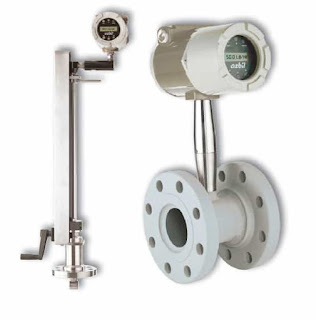EXTENDED MEASURING RANGE FOR LOWER FLOW RATES
Much of the measuring range of a standard vortex flowmeter is at higher fluid velocities. Because of this, measurements at low flow conditions may be missed due to the low flow cutoff. To remedy this issue, users often install pipe reducers and a smaller than line size vortex meter to increase fluid velocities through the meter. The Azbil AX24R reduced bore vortex flowmeter has integrated reducing flanges, eliminating the need for separate pipe reducers and spool pieces. This integrated reduction extends the measuring range to capture lower flow rates.
CAPTURES STEAM FLOW IN BOTH HIGH AND LOW DEMAND SEASONS
Steam usage in heating systems can vary widely based on seasonal demands. These systems are commonly sized with the high demand season (colder weather) in mind, and little thought is given to the low demand season (warmer weather). This leads to a situation where steam flowmeters are oversized and may miss flow measurements at low flow conditions. AX24R reduced bore vortex flowmeters have an extended low flow measuring range, capturing both high and low demand seasons.
REDUCED INSTALLATION COSTS
Like most flowmeters, vortex flowmeters have requirements for unobstructed upstream and downstream piping lengths to ensure a proper flow profile through the meter. Adding pipe reducers adds cost and complexity to the piping design since those unobstructed piping lengths are required before and after the pipe reducers.
The AX24R reduced bore vortex flowmeter has integrated reducing flanges, eliminating the need for separate pipe reducers and spool pieces. Drastically reducing both the complexity and cost of the meter installation.
SAME FACE-TO-FACE DIMENSION AS A STANDARD VORTEX METER
AX24R reduced bore vortex flowmeters have the same face-to-face dimension as a standard AX24 flowmeter for pressure classes up to ANSI 600. So if process conditions change, the meter body size can be changed without any costly piping modifications. This is especially useful in project planning, as it allows for flexibility into the future.
For more information on the Azbil AX24R in New England, contact Piping Specialties / PSI Controls. Call 800-223-1468 or visit https://psi-team.com.



